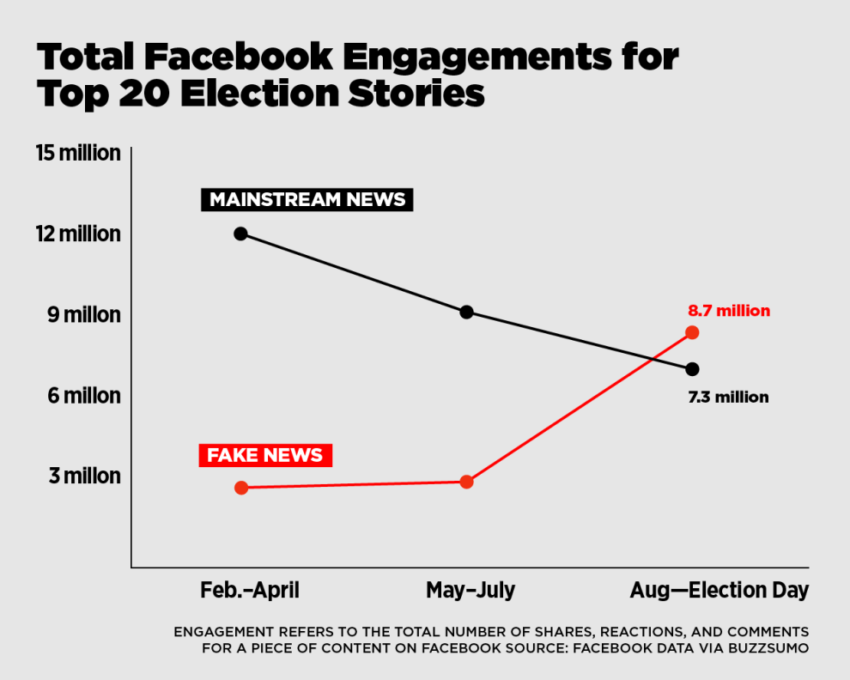Small nonprofits often complain that they don’t have the time or the money to manage a big social media presence. However one of the many lessons of the 2016 US presidential campaign is that bare-bones social media teams can have a huge impact.
In the final three months of the campaign, a Buzzfeed study showed that demonstrably false election news stories (coming from hoax sites and hyperpartisan blogs) on Facebook generated more engagement than the top stories from major news outlets such as the New York Times, Washington Post, NBC News etc.

Where did some of these Facebook stories come from? Super small teams with tiny budgets, relative to their influence. And how did they have such outsized influence? They invest heavily in two things:
1. Advertising
Over the past few years, nonprofits have experienced a huge drop in organic traffic to their pages. I’ve seen estimates that nonprofits only reach the newsfeeds of 3 – 8 percent of their fans when they don’t advertise.
Why the drop? Simple: your content is at the mercy of Facebook’s algorithm, and Facebook wants pages to advertise. Mark Zuckerberg funnels huge amounts of traffic to nonprofits’ websites, and he wants something in return.
How much should you invest? According to the latest M+R Benchmarks Report, nonprofits invested 4 cents of every dollar raised online back into digital ads. So, for example, if your organization raised $100,000 in online donations, you would invest $4,000 of that back into things like list acquisition, search engine ads, and paid social media posts.
2. Content creation
The Facebook page Make America Great currently has nearly 500,000 Likes. According to a New York Times Magazine feature, the page’s parent site is owned and operated by a 35-year-old online marketer named Adam Nicoloff who runs the page out of his home. He spends around $8,000 a month on hosting fees, advertising buys on Facebook, and two freelancers in the Philippines who post for him. Every day, they scour the internet. If something seems to be going viral elsewhere, they copy it to their site with an urgent headline. Voilà: social media gold.

The Facebook page Occupy Democrats currently has 6.2 million Facebook Likes. The page’s founder told the New York Times that he’s probably made 10,000 graphics. “It’s like running 10,000 focus groups,” he said. Based on how users respond, he iterates and refines – again, and again, and again…
It’s up to you to ensure that your nonprofit’s social media team can dedicate time every day to scan social media sites for trending content and repackage those stories through you own lens, preferably with snazzy social media graphics. For example, when it was announced yesterday that Chelsea Manning was being released from prison, the ACLU jumped on the news, posting this graphic:

Terry Littlepage, an internet marketer based in New Mexico, has taken to scale the model of investing in ads and content creation. He runs 50 politically themed Facebook pages with names like The American Patriot and My Favorite Gun. Together, his Facebook pages have 10 million followers. He spends about $1,000 per day on Facebook ads and content aggregation with a team of freelancers. The result? He doubles his daily investment by pushing users and to external websites chocked full of ads.
The bottom line
Your organizations might not aspire to influence the national debate as much as these Facebook pages do. But if you’re looking to gain social media influence, and you don’t have a lot of resources – take a page out of the playbook of fake and viral news pages: invest your time and dollars in ads and content creation.